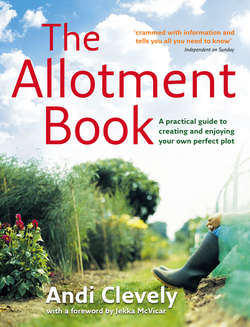Читать книгу The Allotment Book - Andi Clevely - Страница 19
PERENNIAL CROPS
ОглавлениеForest gardening depends heavily on perennial crops, but even under conventional methods of management there are some popular perennial vegetables that can be fitted into the allotment’s layout where they can grow undisturbed for five years or more. Asparagus is best allocated a bed to itself, although the attractive fern will blend with perennial flowers in an integrated border; globe artichokes, rhubarb and Welsh onions could be included, too. Perennial cauliflowers, good king henry and salad dandelions are less appealing and would be better in a separate corner. Clean the ground well before planting, feed or mulch annually to sustain growth, and replant the crops on fresh ground when they need renewal. Check regularly for pests and diseases that might be passed to seasonal crops.
With this design system, the garden or allotment is divided into zones, with plants that require the most attention closer to hand. A typical border will include ‘keyholes’, which are short paths branching to the side of a main pathway. These paths are surrounded by zones of plants, the closest (salads or spinach, for example) requiring frequent care or harvest, while the furthest, such as cabbages or squashes, need tending only once in a while. The overall aim is to combine beauty and bounty with easy maintenance.
SEE ALSO ▸ Improving your soil pages 116–21 Green manures page 119 The case for weeding pages 152–3 Keeping your plants healthy pages 154-7
